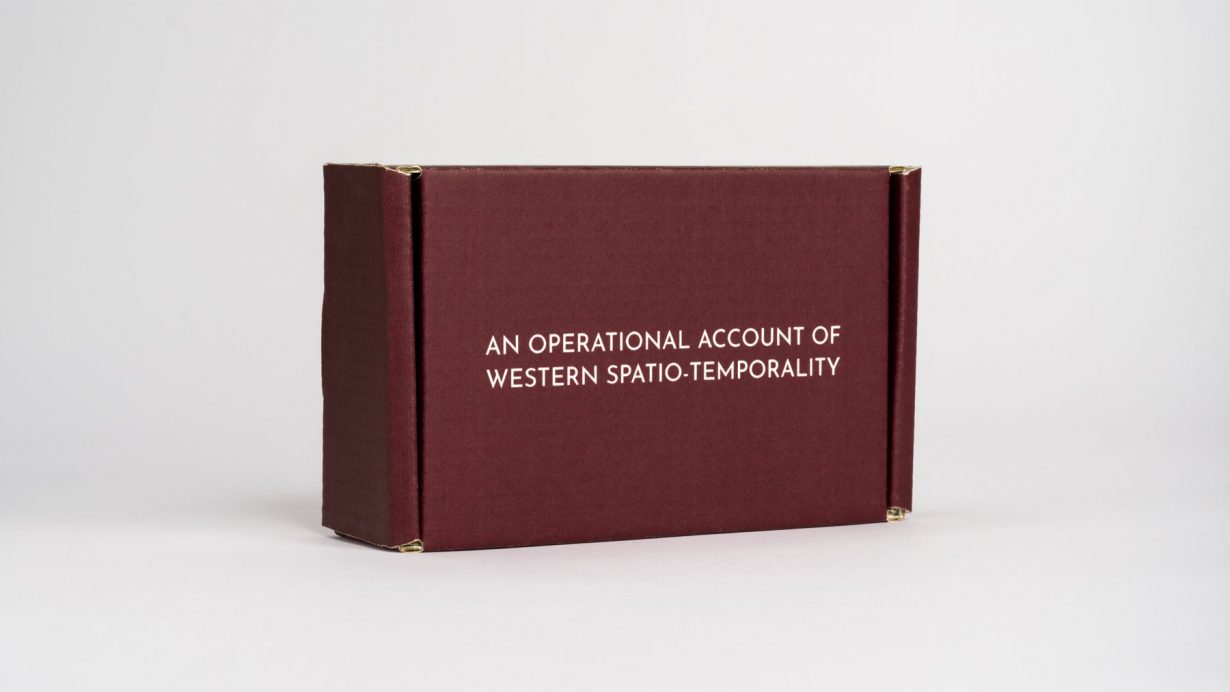Artist Miljohn Ruperto’s accordion-format book is a discourse on how three Ancient Greek ‘types’ of time have determined how the Western subject has historically located itself in the world

The title essay of this little box of tricks (around 12 × 8 cm), a limited-edition artist book by Los Angeles-based, Manila-born Miljohn Ruperto, is printed in an accordion-folded format. And it performs what it describes: it’s about space and time, and it unfolds (literally) across space and time. The essay itself is a discourse on how three Ancient Greek ‘types’ of time – aion (eternal time, figured as premodern), chronos (linear time, modernity) and kairos (the time of action, the emerging present) – have determined how the Western subject has historically located itself in the world. (In Ancient Greece, Aion and Chronos were personified as deities, kairos remained an idea.) And how, in locating itself, that subject shapes the world around it – the body as measure of space, individual mortality as measure of time – as an operation of the ego, if you want to put a twentieth-century slant on it. As the world is reshaped, the process repeats itself, fuelled by the desire to stabilise a world that is inherently contingent. Ruperto can’t help but quip about how even the decision to use linear language is a form of capitulation to this impulse, while conceding that such concessions are unavoidable. And you can’t help but wonder how all this mirrors the desire to categorise and standardise that underlies both the colonial project and its decolonising corrective.


Accompanying this are three flipbooks, free of language but filled with art-historical reference (obviously, art is one of the vehicles through which the reshaping of the word occurs) via images of disembodied heads rotating (as you flick through) in an otherwise empty space. The Baroque Is a Geometric Imposition Upon Wild Nature features the head of Medusa, snakes writhing, head rolling, tongue lolling; History Awaits Immanence presents what might be the head of John the Baptist doing something similar. The third, Western Temporalities Incline Towards a Tripartite Structure, offers a calmly rotating three-faced Christ (an embodiment of the Trinity). So, what’s the point? Like Ruperto’s work in general, there’s an intriguing play between an apparent sense of control, or purpose, and the actual lack of it. And between what’s in the mind and in the world.
An Operational Account of Western Spatio-Temporality by Miljohn Ruperto. X Artist’s Books, $35 (3 boxed flipbooks and a booklet)